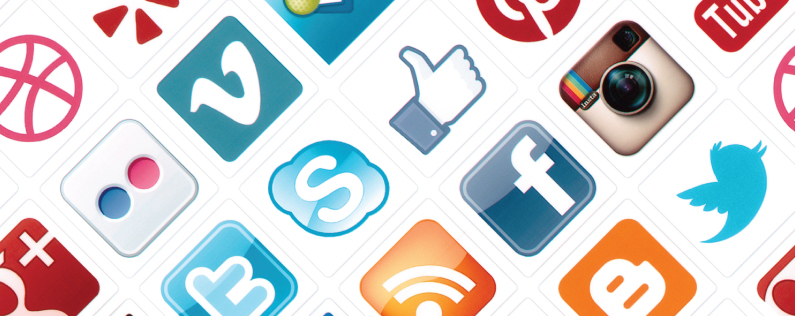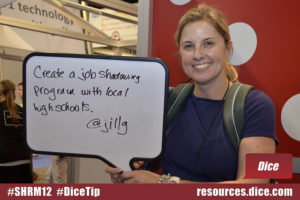
Planning and running an event, conference, concert, festival or workshop takes time and resources. With a million little details to worry about, sometimes the social engagement program takes a back seat. When I see that happening at an event it makes me sad because social interaction dramatically expands awareness, builds event buzz, enhances participant experience and creates positive ripples long after the event is over.
So how can you run a powerful social program when you are worrying about ticket sales, where the projector is, and why one of the band members is passed out back stage?
Build a Core Team
Identify influential people on social media
Look beyond the Klout score or high follower count. You need people who are actually part of your target audience. Not sure who they are? Jump onto twitter and look at your followers and their followers. Zero in on the people who are already talking about your event or events like yours.
Do your homework and research the people you want to invite to promote your event. Read their feed. If they typically use a lot of profanity in their stream or actively support a controversial cause you need to think twice about putting them on your front line. You can also use tools like followerwonk, which gives you a more complete picture of how truly influential someone is.
What will encourage this group to participate? Consider free tickets or VIP passes to exclusive parts of the event, preview programs or behind the scenes access. Be very clear about what you are offering up front. Let people know if they can bring a guest or if the program is appropriate for children.
Decide what you want
Are you looking for people to share their opinions, photos and experiences during the event or write blog posts or reviews? Be specific. Give people guidelines, talking points and relevant information up front:
- The event hashtag – More on picking a good one in the next section.
- Talking points – Samples of messages you would like them to share.
- The agenda – If there are specific times during the event when you would like them to share content, tell them that up front.
- Background information – This is what sports writers often refer to as color commentary, the little bits of interesting trivia about the history of the event or personalities involved.
- Give them specific assignments such as please share 5 photos during the event, tweet once an hour using the hashtag, or re-share updates from the official event Twitter or Facebook account.
- Who to contact when they have a question – If they are doing a good job of sharing information about your event, it is possible they will get a question they can’t answer. They need to have a direct line to someone on your team who can.
Ultimately, people will do what they want – When you invite someone to attend your event as your guest, there is the risk they may not follow your instructions or even like the experience. You can’t control what they will do,or say, but having some clarity about your expectations up front helps.
Have a hashtag. Keep it short. Every character you use in a hashtag is one less you have to tell your story. Pick something which makes sense. At the Indy Fringe festival this year, the natural hashtag would have been #indyfringe and that was what many people choose to use. But the official tag was #Fringe14. While it was cool to see tweets in the newsfeed between the festival in Indy and the one in Edinburgh it was confusing. Also the multiple hashtags made it harder to share and retweet comments because they were scattered between multiple hashtags.
Engage others
Look beyond the core influential group. If you have picked the right people, when they share content their fans, friends and followers will share the information. Pay attention to the news feed. If you see someone actively engaging you may have someone you want to add to your influencer list next year. Here are a few bonus tips to engage a wider audience:
- Invite others to participate. Share the hashtag prominently on signage throughout the event.
 Give people props. It might be a cut out of a famous person, or a backdrop against which people can take pictures and share them socially. I have seen this whiteboard strategy at a number of conferences recently. The board is large enough to write on. Instead of simply tweeting, they write the information, hold it up and take a picture. The result is a much more memorable piece of content.
Give people props. It might be a cut out of a famous person, or a backdrop against which people can take pictures and share them socially. I have seen this whiteboard strategy at a number of conferences recently. The board is large enough to write on. Instead of simply tweeting, they write the information, hold it up and take a picture. The result is a much more memorable piece of content.- Respond and say thank you. Remember that social media is heavily driven by ego. People share information because they want to be noticed, so notice them. Sometimes just getting a minute of fame, seeing their tweet scrolling along a tweet wall is enough to encourage someone to share their thoughts at an event. Like, star, share or re-tweet comments. You don’t have to respond to every comment, but if people notice you are regularly engaging with people who talk about you, they are more likely to do so.
Make it simple, fun and rewarding for people to tell your story and they will.
Enjoy what your read? Want more? Subscribe to our newsletter and get a steady stream of new ideas sent your way.
[Formstack id=1860163 viewkey=tGxOMyLn2L]
